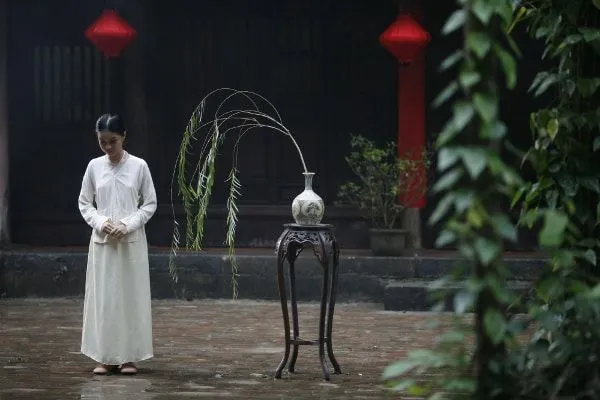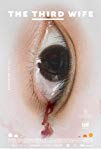Eye For Film >> Movies >> The Third Wife (2018) Film Review
The Third Wife
Reviewed by: Amber Wilkinson

Most US directors drift in the direction of small-scale personal drama and brownstones in Brooklyn for their first features - but Vietnamese director Ash Mayfair (who splits her time between her homeland and New York) imposes no such limitations on herself with her striking debut. Set in rural Vietnam during the late 19th Century, her film draws on her own family history and revels in the country's open spaces and lavish costumes to explore the patriarchal structure of the period. Some of the accomplishment of the film may stem from its long period of development, during which it won the Spike Lee Production Fund award of 2014 and made the NYU Purple List of 2015, but the story retains a distinctive, personal feel that many workshopped projects lack.
The visuals are key to Mayfair's success, with dialogue often kept to the minimum in favour of looks - alone or shared - that offer a window into the wives' psyches. The use of colour by Mayfair and her cinematographer Chananun Chotrungroj (Hotel Mist, Pop Aye) - mainly pastels with pops of red and yellow - also recalls the mastery displayed by Zhang Yimou in his early consideration of multiple marriages, Raise The Red Lantern. Also, as with Yimou's film, although the men are present, they are rarely dwelt upon, with the focus kept firmly on the women.

May (Nguyen Phuong Tra), who was just 12 when she gave this impressive debut performance), is the third wife of the title, sent, at just 14, to marry the much older Hung (Le Vu Long). On arrival at his family compound, she finds she is slotting into a ready made pecking order, not many years older than the second daughter of the second wife Xuan (Mai Thu Huong) and a long way from having the power of Hung's first wife Ha (Tran Nu Yen Khe), who bore him his Son (Nguyen Thanh Tam), the capital letter of the character name no mistake.
Mayfair treats her scenes of sex and desire with restraint, using juxtaposition to evoke mood so that silkworm caterpillars supply the disturbing emotion of May's wedding night. The silkworm life cycle is returned to repeatedly through the film, their busy existence in many ways just as futile and for the sole profit of others as that of the wives. Water imagery is also used repeatedly to suggest something more sensuous, as May finds her attractions to Xuan growing, even as the older woman embarks on her own forbidden affair.
Although this is a film that puts the women's predicament at its heart - with each acting both as support group and competitor to the others, a feeling heightened after May falls pregnant - Mayfair shows sympathy for the men as well, who despite more ostensible power are almost as cocooned into the cultural system as their female counterparts. Perhaps the only heavy-handed notes are those struck by Ton That An's score, which announces its presence rather more than it should, although it is mitigated by excellent sound design by Eduardo Morin, that enhances natural sound, such as footsteps through grass and birdsong.
Reviewed on: 21 Feb 2019

















